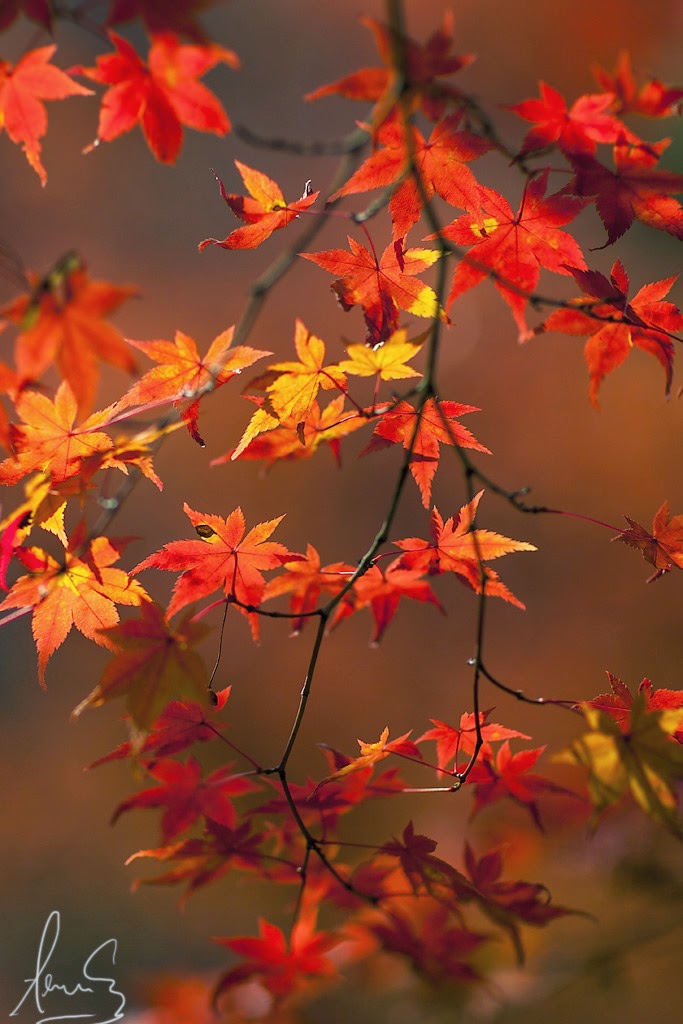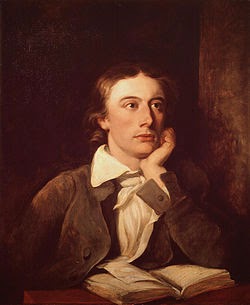To bend with apples the moss’d cottage-trees,
 |
| Autumn Colors at Tofuku-ji Temple courtesy of Sacha Fernandez Creative Commons |
Spares the next swath and all its twined flowers:
And sometimes like a gleaner thou dost keep
 |
| Autumn Bokeh courtesy of Torbus Creative Commons |
Think not of them, thou hast thy music too,—
In the first stanza, I love the imagery that is created by Keats filling the reader’s senses with the ripeness of the harvest. Do you notice the sibilance that is conveyed with words like “mists”, “close blossom”, “bless”, “moss’d”, “swell”, “sweet”, “set”, “cease” and “cells”? It gives a soft sound to the first stanza that lulls the reader into the dreamy shades of autumn.
The second stanza expresses autumn as a person, and the reader can almost see a goddess sitting on the granary floor while the teasing breezes caress her hair. Here autumn rests from her harvest. The personification makes “her” more real, more alive.
While autumn is a season of endings and we tend to start to look forward to spring, yet in the third stanza, Keats encourages the reader to revel in autumn’s glory and bask in its golden sunset, rather than look ahead to something that cannot yet be enjoyed.
I’ve had little exposure to Keats so far, but know this poem will be one of many to come. I hope you’ve enjoyed it as much as I have and have a very happy autumn season!


